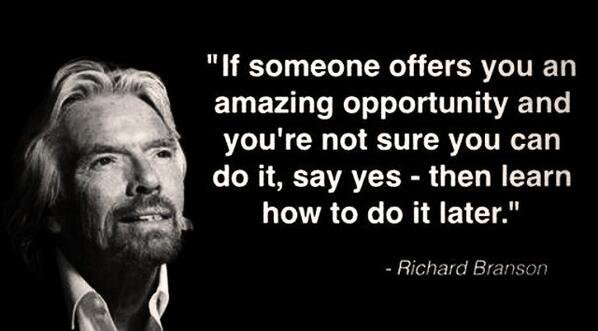Doing Salesforce is a logical next step for any Domino developer
Over the last year I had dozens of conversations with developers that develop on the Domino platform, ranging from customers to freelancers and ISVs, about if and how they could enter the Salesforce community. I found myself repeating some elements all the time. And I recognised that I wanted to have known that for myself much earlier. So it’s time to write my personal opinion down…
Independent of if I talked to a single developer, the head of an ISV company or someone else, there was always one common theme in what I said:
It’s all about opportunities and to embrace them
First answer yourself these questions:
- Do you want to apply your skill set to create business applications on a modern platform?
- Do you want to learn every four months tons of new capabilities on “your” app dev platform?
- Do you want to be in a fast growing market with high demand for skilled people?
This blog post is probably not for you if you don’t want any of these points. Otherwise…

The skill set opportunity
What type of developer are you calling yourself today? Domino developer? JavaScript developer? Frontend developer? Backend developer? Java developer? Fullstack developer?
Whatever you call yourself nowadays, if you come from a Domino background you have, IMHO, some skills that go beyond just knowing the latest JavaScript framework or how to run scheduled Java-based tasks in a multi-server environment. Here are some of them:
- Multi-layer security is what you grew up with.
- You’re more than familiar with parent-child relationships.
- Formulas anyone?
- Creating workflow based business processes.
- …
Are you more of frontend developer nowadays? By living and breathing in Angular, React, Vue.js, and other JavaScript based frameworks. Writing code all day long in ES6/TypeScript using Atom or VS Code. Doing UI styling in BEM and SASS. No? Yes? It doesn’t matter because the JavaScript based Lightning Component Framework gives you options for all tastes.
Or are you’re more into other modern languages like Clojure, Ruby, or Scala? Node.js is your preferred server-tier? There are many options to integrate Salesforce with Heroku. And as we live in an API-first world - API is what Salesforce is built on.
And when you built custom web apps and want to use Salesforce as the backend - checkout what the Lightning API offers.
If you say now: “I don’t have some of the technical skills needed”… read Zac’s story. And check out what Salesforce developers from different backgrounds have to say. Then revisit.
https://www.youtube.com/watch?v=LIefFBi-lHw
The learning opportunity
Imagine the following:
You get a list new APIs, new functionality, new methods, new options. And the overview list of all those things compromises around 90 pages of A4 in PDF. Only for developers though - the full PDF for all product features has 500+ pages.
Does that sound appealing? Well, welcome to the world of Salesforce releases. The Summer '17 release gets active in a couple of weeks. You want to know when the Summer '18 release gets deployed? No problem - checkout the bubbles in the calendar on the status homepage. Not only that the scheduling gives customers security in their planning. It also gives you, as a developer, confidence that a wealth of new capabilities to learn, to apply, will come. Every four months. Are you ready for that?
The growth market opportunity
Let’s start this one with a quick exercise:
Open a browser tab, enter the address of your favourite job/freelance search engine and lookup the offerings for your current main skillset (tip: substract from the results anything that includes pizza companies) and for what’s available for Salesforce developers/administrators/consultants/etc.
While this is not a very scientific approach and can also be different from country to country, from region to region (try it out, your mileage may vary), you’ll figure fast that there is a high demand for people with Salesforce skills. And it’s a fast growing market. Some weeks ago indeed.com published their list of best jobs for 2017 - and Salesforce developers and administrators rank in the top 10!
Oh, and if you’re building products as an ISV (don’t look only at Redmond) - what could be better than a marketplace (aka AppExchange) where customers can install your solution with a few clicks? Especially with the recently launched new Partner Program.
TL;DR - Call to action
So you read to the end. Thank you very much for that. The next question should be “Where to start?”. I have four recommendations for you.
Start learning with Trailhead
There is no better way to directly get hands on than Trailhead. Exclamation mark. I can say that because it’s the way how I learned Salesforce.
Visit User Groups
Find a meetup near to you. There are more than 200 of them around the world, by developers for developers. There are also many customer-led user groups - a big shout out here to the awesome Erica and Holly (and their team!), who are recognised Community manager mentors and leaders, for working on that.
Visit Community events
Throughout the year many independent, community-led events are held around the world (this week i. e. Dream Olé in Madrid - sorry, but sold out already). Maybe you’re more into surfing or like to visit Paris? Chicago is AFAIK the next one for folks in the US. Pick them, they’re all great!
Visit TrailheaDX
Last but not least there is very soon TrailheaDX happening on June 28-29. Join thousands of developers and administrators in Moscone West, San Francisco, for this two-day-event to learn about the latest on the Salesforce Platform. You’ve got a great product idea and want to build your startup on that - try and see if you can win 50K USD!
There are many ways to make a next step. This is one of them. One Trailhead module after the other. ;-)
PS:
This post is not about what to do with your current Domino apps or infrastructure. I’ve no skin in that game any longer - which is good. I am not saying “stop what you do right now and move on” - but I am saying “make educated decisions for your path forward”. Everyone likes to have options. This is one. And a very viable.
Some may say now: “That doesn’t work for me because my company or my current customers don’t go cloud.” Fair enough. But what’s the limiting factor in that sentence then?

